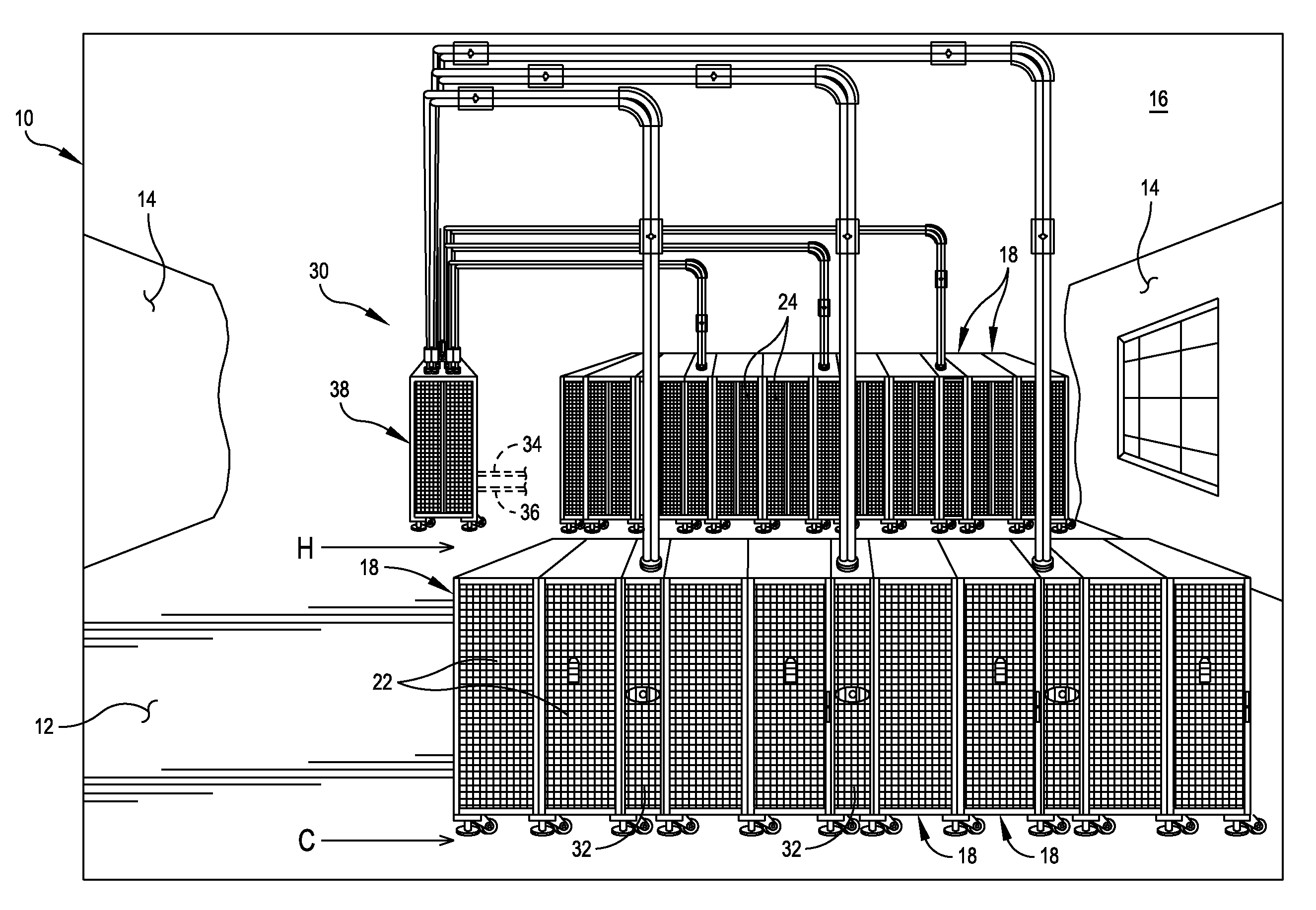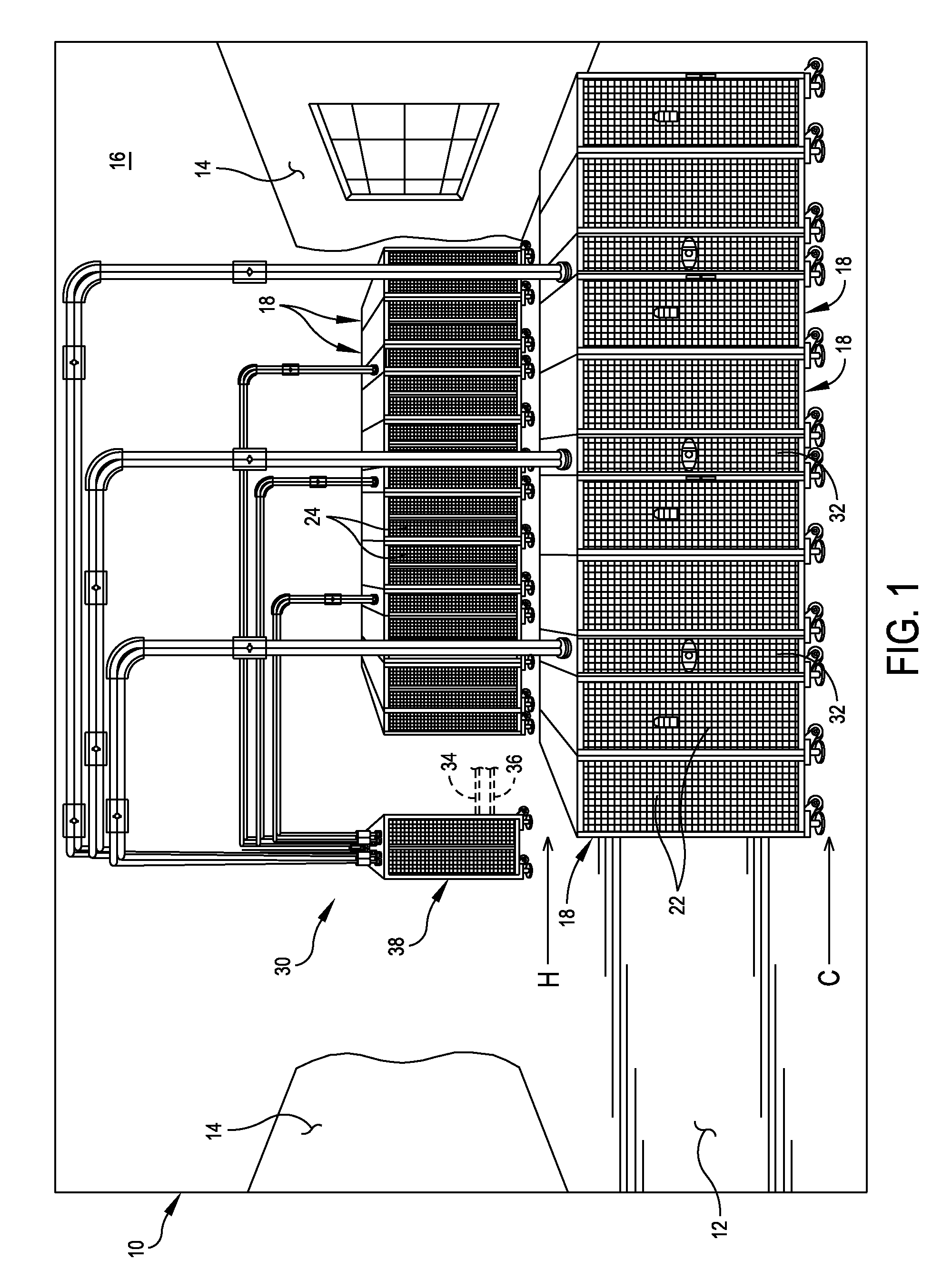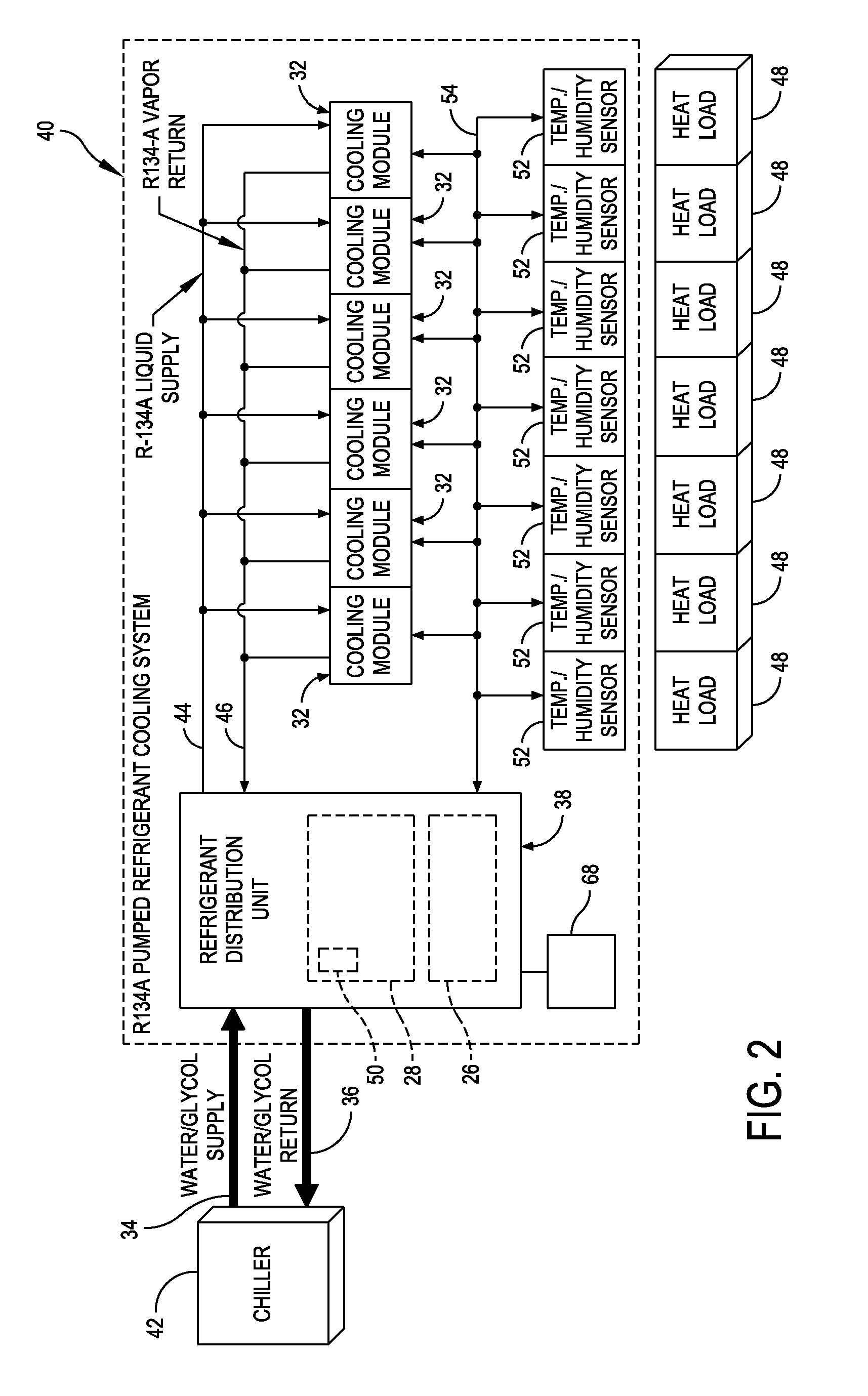Systems and methods for detecting refrigerant leaks in cooling systems
a technology for cooling systems and refrigerant leaks, which is applied in the field of cooling systems, can solve the problems of rack-mounted equipment that can have adverse effects on the performance, reliability and useful life of equipment components, rack-mounted equipment, housed within an enclosure, and may be vulnerable to heat build-up and hot spots, and it is impossible or nearly impossible to detect a loss of refrigerant within the cooling unit or within the cooling system in general. , to achieve the effect of constant load, constan
- Summary
- Abstract
- Description
- Claims
- Application Information
AI Technical Summary
Benefits of technology
Problems solved by technology
Method used
Image
Examples
Embodiment Construction
[0024]This disclosure is not limited in its application to the details of construction and the arrangement of components set forth in the following description or illustrated in the drawings. The concepts described in this disclosure are capable of other embodiments and of being practiced or of being carried out in various ways. Also, the phraseology and terminology used herein is for the purpose of description and should not be regarded as limiting. The use of “including,”“comprising,”“having,”“containing,”“involving”, and variations thereof herein, is meant to encompass the items listed thereafter and equivalents thereof as well as additional items.
[0025]At least one embodiment of the present disclosure is directed for use with a cooling system that is configurable to cool electronic equipment housed within equipment enclosures or racks of a data center. As used herein, “enclosures” and “racks” are used to describe apparatus designed to support electronic equipment. Such a cooling...
PUM
| Property | Measurement | Unit |
|---|---|---|
| temperature | aaaaa | aaaaa |
| temperature | aaaaa | aaaaa |
| real time | aaaaa | aaaaa |
Abstract
Description
Claims
Application Information
 Login to View More
Login to View More - R&D
- Intellectual Property
- Life Sciences
- Materials
- Tech Scout
- Unparalleled Data Quality
- Higher Quality Content
- 60% Fewer Hallucinations
Browse by: Latest US Patents, China's latest patents, Technical Efficacy Thesaurus, Application Domain, Technology Topic, Popular Technical Reports.
© 2025 PatSnap. All rights reserved.Legal|Privacy policy|Modern Slavery Act Transparency Statement|Sitemap|About US| Contact US: help@patsnap.com



